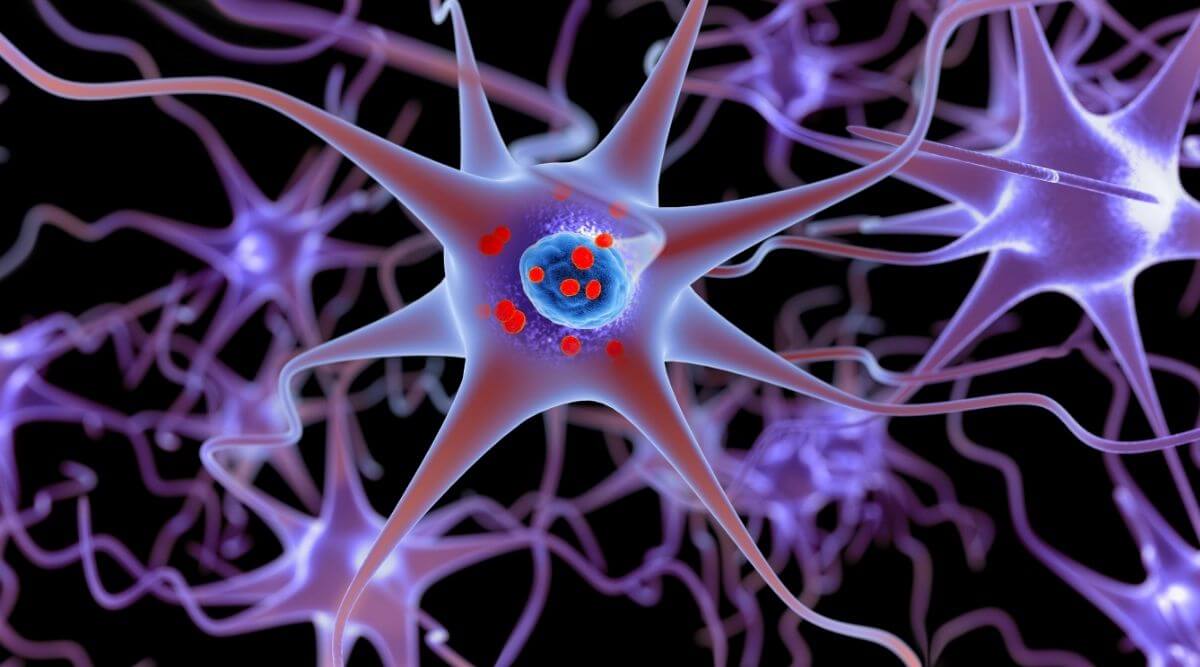Gaucher Disease and Parkinson’s Disease are two distinctly different diseases in terms of their onset, symptoms, and prognosis. Despite these differences these diseases have one common denominator: the GCase enzyme.
Where is glucocerebrosidase in the cell?
The enzyme glucocerebrosidase is also known as beta-glucocerebrosidase or GCase. The enzyme is abundant within the lysosome, our cellular garbage disposal, where it works to break down the glycolipid glucocerebroside into the sugar glucose and lipid, or fat. Mutations in the gene that encodes GCase, GBA1, can cause the enzyme to misfold and work incorrectly. This improper function is associated with multiple diseases – Gaucher and Parkinson’s disease.
What is Gaucher disease?
Gaucher disease is inherited genetic lysosomal storage disorder caused by mutations in GBA1. The misfolded GCase causes the lysosome to be partially broken, unable to breakdown certain lipid molecules causing them to build up in cells. Scavenger cells called macrophages normally clean up debris from our cells or infections, but in people with Gaucher disease, macrophages fill up with fatty molecules. These cells then get stuck in organs like the liver, bone marrow, spleen, or the central nervous system. Unfortunately, these deposits cause dysfunction of the affected organ systems and there are currently no disease-modifying treatments. Some people with Gaucher disease experience no symptoms while others may suffer from a variety of signs including skeletal problems, anemia, bruising and bleeding troubles as well as abdominal swelling. There are three types of Gaucher disease that are classified by the presence of absence of neurological manifestations associated with the disease.
How does GCase dysfunction cause Parkinson’s disease?
Millions of people around the world suffer from the neurodegenerative disorder known as Parkinson’s disease. The disease is associated with the misfolding and accumulation of the protein alpha-synuclein into deposits known as Lewy bodies within the central nervous system. However, the most common genetic risk factors associated with Parkinson’s disease are mutations in the GBA1 gene. In general, patients with GBA1-Parkinson’s disease experience earlier onset of symptoms with an aggressive disease course involving the classical signs of resting tremors, slowness of movement, and general rigidity. There are a few hypotheses for how GCase is related to the development of Parkinson’s disease. One thought is that GCase dysfunction and the following disruption in lipid metabolism increases the likelihood that alpha-synuclein will misfold. After the misfolding cascade begins, the protein eventually becomes toxic to the neuron causing cell death. Like Gaucher disease, there is no disease-modifying treatment for patients with Parkinson’s disease.
What is Gain Therapeutics doing to treat diseases caused by mutations in GBA1?
The Gain Therapeutics pipeline is focused on Type 2 and 3 forms of neuronopathic Gaucher disease as these are more severe for patients creating a significant unmet need for a medical treatment. Using the novel SEE-Tx platform to identify Structurally Targeted Allosteric Regulators (STARs) compounds for GCase provides a unique opportunity. Instead of one disease with one target and one phenotype, the research teams can validate efficacy of the drugs at correcting multiple disease-associated phenotypes. Gain recently presented results from their studies at The Michael J. Fox Foundation for Parkinson’s Research webinar.
Work presented was completed by collaborators at the University of Maryland School of Medicine. Using an induced pluripotent stem cells (iPSC) that were created from patients with GBA1-Parkinson’s disease or Gaucher disease, they tested two STAR compounds developed by Gain Therapeutics. The results of the study showed that the compounds not only increased the levels of GCase in the lysosome, but they also enhanced the enzymatic activity in the neuronal iPSC model of Gaucher disease. In their dopaminergic neuron model of Parkinson’s disease, the researchers found that the compounds were successful at depleting toxic alpha-synuclein levels within the cell. Together, these initial results are encouraging because they demonstrate the promise of these STAR compounds as well as the potential of Gain Therapeutics’ novel approach to drug discovery. With these exciting results, it is likely that the STAR compounds will be moving into the next phase of testing with hopes of initial human trials soon.
Finding treatment for GBA1-associated diseases is a significant step forward in using allostery as a therapeutic approach. Success in stabilizing the enzyme GCase and restoring function would not only help patients suffering from Parkinson’s and Gaucher disease, but it would provide more evidence that protein stabilization is an effective method to treat protein misfolding disorders. Discovering a solution for the unmet medical need of patients suffering with these diseases creates an opening for much larger medical needs in neurodegeneration and oncology.

